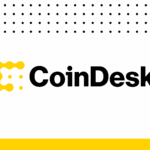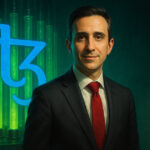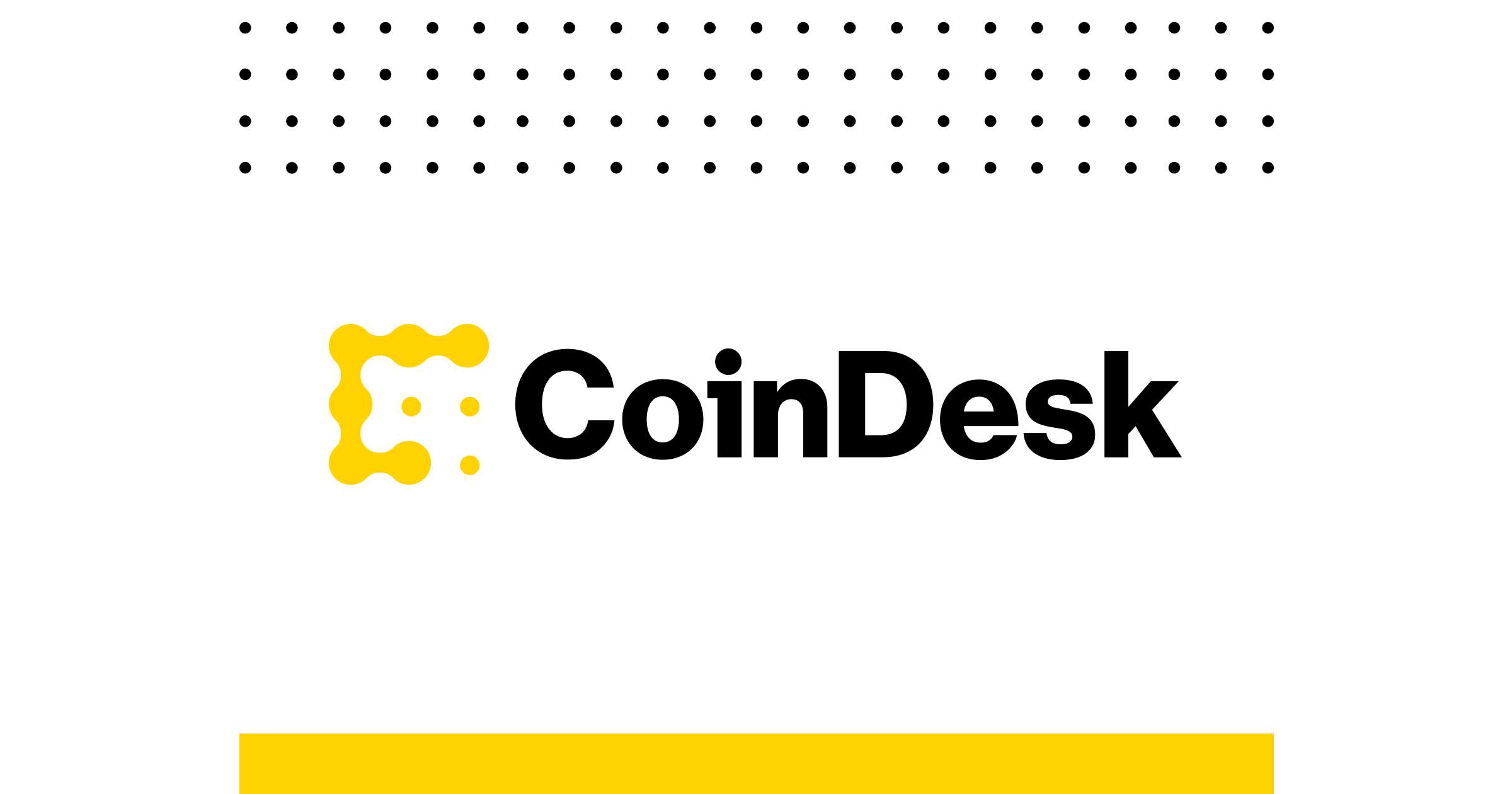
Arthur Breitman is investing in tokenized uranium, potentially marking a major resurgence for Tezos.
Introducing Slate Sundays, CryptoSlate’s latest weekly segment that delves into comprehensive interviews, expert insights, and thought-provoking op-eds, exploring the ideas and individuals influencing the future of cryptocurrency.
My last conversation with Tezos co-founder Arthur Breitman took place during the Paris Blockchain Week Summit in 2019, coinciding with the Notre Dame fire. I vividly remember the astonished gasps from the crowd facing the cathedral as the fierce flames consumed its spire, sending thick plumes of smoke skyward.
Despite this historic disaster, the atmosphere at the conference was electric. It was an era where innovative concepts often overshadowed the existing technology, revealing a significant divide between engineering capability and marketing potential.
At that time, decentralized finance (DeFi) was still a budding idea. Decentralized exchanges faced skepticism due to their sluggish performance and minimal liquidity, with IDEX leading the pack, registering a monthly trading volume of 400K ETH at roughly $150 per coin.
Privacy coins were not yet stigmatized. Participants could trade crypto freely without needing to comply with KYC regulations, and John McAfee was famously evading the IRS while on his yacht in the Bahamas (may he rest in peace).
Many projects were simply rehashes of web2 applications tied to a blockchain, which could have operated smoothly even without it.
- “Tell me about [insert novel name here],” I would inquire.
- “It’s Salesforce on the blockchain.”
- “It’s Uber on Neo.”
- “It’s a decentralized Travelocity.”
- “It’s transparent space travel…”
Essentially, it involved flashy marketing and an enticing whitepaper, often led by opportunistic figures likely to clash with federal regulators.
Even in the most challenging phases of the market, these events attracted sizable audiences, engaging in debates about blockchain scalability, the journey toward mass adoption, how to win over traditional financial sectors, and when a clear regulatory framework for cryptocurrency would materialize. Some issues persist; others feel like they belong to a bygone era.
The conference commenced with remarks from Bruno Le Maire, the French Economy Minister, eager to promote the newly enacted PACTE law for digital assets while underscoring France’s commitment to blockchain technology. A bizarre contrast unfolded as the event was hosted by Bad Crypto, an irreverent American podcast duo whose frat-boy humor didn’t resonate well with the audience.
Six years ago, the crypto space was a wild frontier brimming with possibilities. Amid the growing competition amongst Layer 1 blockchains, Tezos, designed as a self-amending protocol responding to Bitcoin’s limitations, positioned itself as a potential competitor to Ethereum.
Now, in 2025, Tezos has a fresh ambition: to lead in the real-world asset (RWA) sector by tokenizing uranium. Meanwhile, Notre Dame boasts a rejuvenated spire.
Tezos: The Evolving Blockchain
Dubbed the “blockchain designed to evolve,” Tezos has shifted its focus alongside the changing narratives in the industry, from currency to DeFi, NFTs to memes, and now RWAs. Its capacity for adaptability, effective treasury management, and resilient approach have kept it away from the fallout that befell many other cryptocurrencies (Tezos raised $232 million in Bitcoin during its 2017 funding round).
In our exchange today, Arthur Breitman appears open and at ease. He seems to have softened since our previous encounter in 2019, now displaying the humility of someone who has navigated the market’s volatility. I remind him of our past meeting, and while I doubt it lingers in his memory, he graciously acknowledges and smiles as I recall his aspirations for Tezos to become the leading blockchain and his forecasts regarding industry consolidation.
“I had a few theses that didn’t pan out,” he reflects. “One was the idea that eventually, people would tire of incessantly launching new coins; the dilution would become unmanageable, and earning returns from new coin launches would become a challenge. Clearly, I was mistaken!”
He laughs lightly as his gaze drifts to the bustling exhibition area filled with vibrant booths and merchandise.
“The formula still exists: secure a hefty investment from VCs, launch a coin, retain 90% ownership, and flood the market.”
In a climate where new tokens are being released at breakneck speed, with amusing names ranking higher than Tezos by market capitalization, and even the President having a meme coin, does Arthur still feel the same passion for his work? He sighs:
“I’m disheartened by the overall direction of the ecosystem—not the Tezos community, which thrives—but there’s a pervasive sense of nihilism within crypto that I find troubling. My initial interest stemmed from the technology, the ideological underpinnings, and the political dimensions… Today, much of that focus seems lost.”
Arthur and his wife, Kathleen, envisioned Tezos as a platform for fostering innovation and conducting experiments impractical on Bitcoin, featuring a self-amending blockchain that eliminates contentious forks and prioritizes governance on-chain. He elaborates:
“Tezos’ core feature is its ability to evolve. We’ve observed many blockchains transition through forced changes, so it’s not true that all are static. However, many accept the centralization that comes when a development team decides to execute a fork.”
In contrast, Arthur asserts that Tezos has steadfastly maintained its decentralization. The entire network can operate on a Raspberry Pi, lowering the barriers for becoming a ‘baker’ (Tezos’ term for validators) and allowing for meaningful and decentralized network expansion. The blockchain also boasts a strong security record, having encountered no major incidents over its duration.
A Genuine Culture of Action
Like many projects in the web3 arena, Tezos’ path has been tumultuous. It has faced a challenging confrontation with the SEC, notable leadership changes, and a decline from its position as a top-tier coin to further down the ranks on Coingecko.
Transitioning perspectives on money, embracing NFTs, and engaging with memes, Tezos has changed course multiple times, reinforcing the “adaptability” Arthur cites as a vital strength.
“Tezos nurtures an active art community, featuring genuine artists producing authentic NFTs. It’s not a massive economic powerhouse—we’re not discussing $100 million fundraising events—but it’s legitimate.”
I wonder if this frequent pivoting leads to a loss of identity. Yet, while meme coins are indeed present on Tezos, Arthur insists they don’t define its core culture.
“It’s less about their presence and more about how they are perceived. Is this aligned with your core values? Is this what you represent?”
So, what is Tezos fundamentally about? How would Arthur characterize its core ethos?
“If I had to summarize it, I’d say it’s about authenticity and doing things for real. When we implemented the Etherlink rollup, it was genuinely decentralized. Most rollups today rely on custodianship. For example, if you’re on Base, Coinbase controls the keys and can manage your assets as they see fit, just as with its internal order books. We avoided that.”
“When Optimism launched, it lacked fraud proofs and relied entirely on trust. We brought authenticity to governance and operations. I’d argue that if there’s a culture, it’s rooted in truly doing things authentically.”
Entering the Realm of Tokenized Uranium
Tezos’ latest initiative is within the RWA space, marked by the debut of uranium.io, a platform that sells tokens representing physical ownership of uranium. This first-of-its-kind venture brought Arthur to TOKEN2049.
“Why would people choose to invest in uranium?” I queried. “I found it intriguing, and that’s why I wanted to dive in,” he responded. I mentioned having heard that uranium outperformed the S&P 500 and provided better returns than Bitcoin or gold. “I’m not keen on that comparison,” he remarked, crinkling his nose. “I don’t view past performance as a predictor of future outcomes.”
Instead, his rationale for uranium investment rests on three key factors: evolving perceptions of nuclear energy, the urgent need for energy security among Western nations, and the ongoing advancement of AI technologies.
Uranium plays a vital role in nuclear energy, and historically, its market has been intricate and hard for most investors to navigate. By bringing it into the blockchain space, uranium.io opens access to an asset class previously limited to a select few investors.
“Younger people care much more about climate change than the risk of nuclear conflict… If you analyze U.S. polling, Republicans generally support nuclear initiatives, whereas among Democrats, the majority still opposes it, though there’s a notable generational divide. As the trend toward nuclear energy progresses, it will likely surpass 50% approval, leading to a surge in new nuclear power plants. Hence, it seems like a wise long-term investment.”
What attributes make Tezos a fitting platform for tokenized RWAs?
“There’s a level of trust, you know? It’s intangible, but it signifies seriousness. Much like how a luxury brand wouldn’t wish to be associated with a lesser brand.”
Assessing Tezos’ Uranium Venture
Looking ahead, what are Tezos’ upcoming goals, and how does Arthur envision its future in five years? “Five years from now?” He laughs.
“That’s difficult to foresee, especially given the rapidly evolving nature of crypto. I can’t predict where the world will be in five years with AI either. However, I can affirm the path we’re on, which is focused on substantial scalability with Tezos X.”
Tezos X aims to be a significant, developer-friendly rollup that welcomes popular programming languages like JavaScript and Python, fostering projects with real-world utility and liquidity.
“We’re pushing for applications that hold resilience and relevance in this space. There’s a tendency among many companies to simply spin narratives.”
He rolls his eyes while glancing at the exhibition hall again. Nearby, a figure dressed as a whale in an astronaut suit poses for photos.
If Arthur’s long-term view on uranium proves accurate and demand rises, Tezos could be onto something substantial, potentially regaining prominence within the industry. If not, Tezos will once again adapt and transform in response to the evolving landscape.















Post Comment